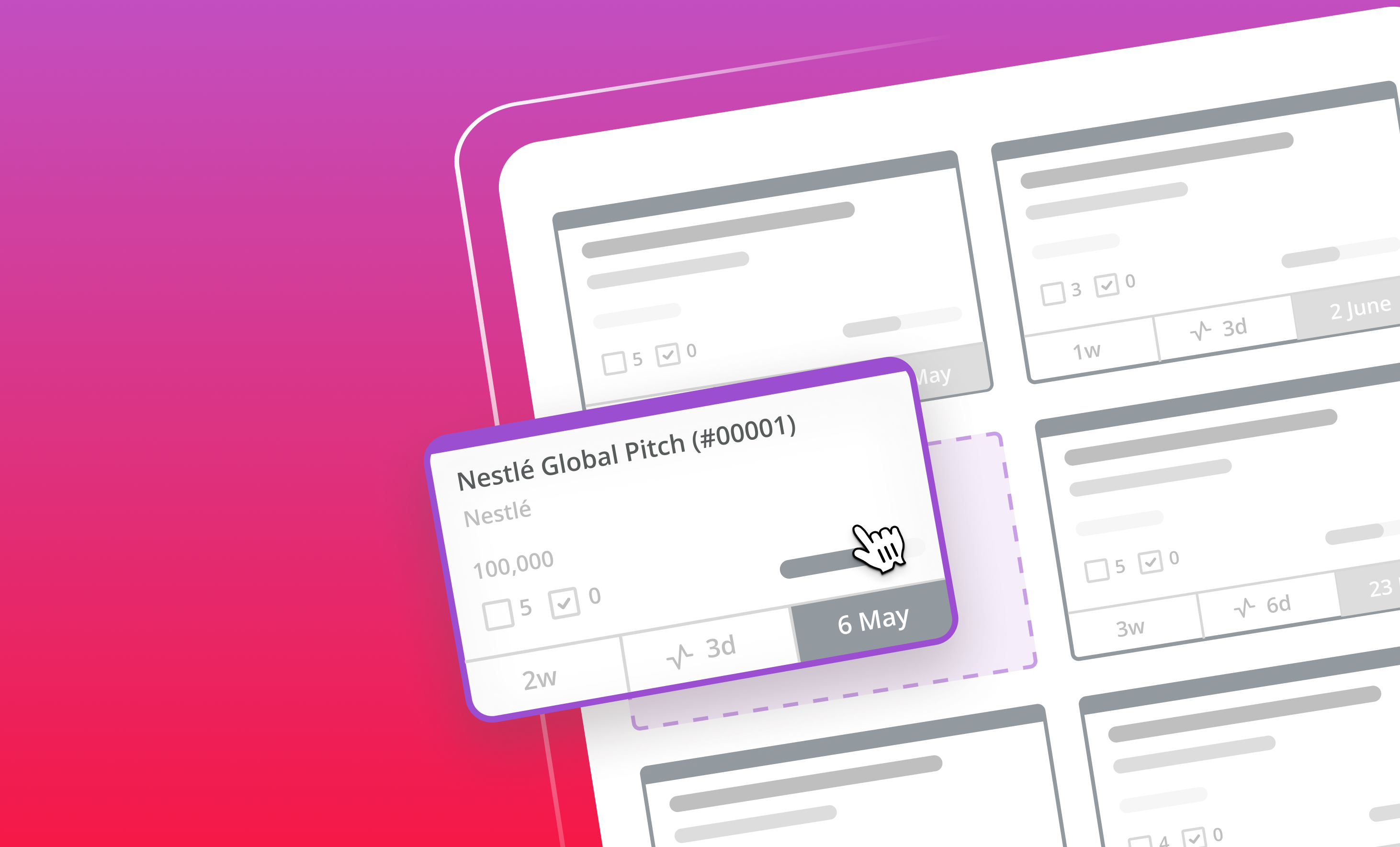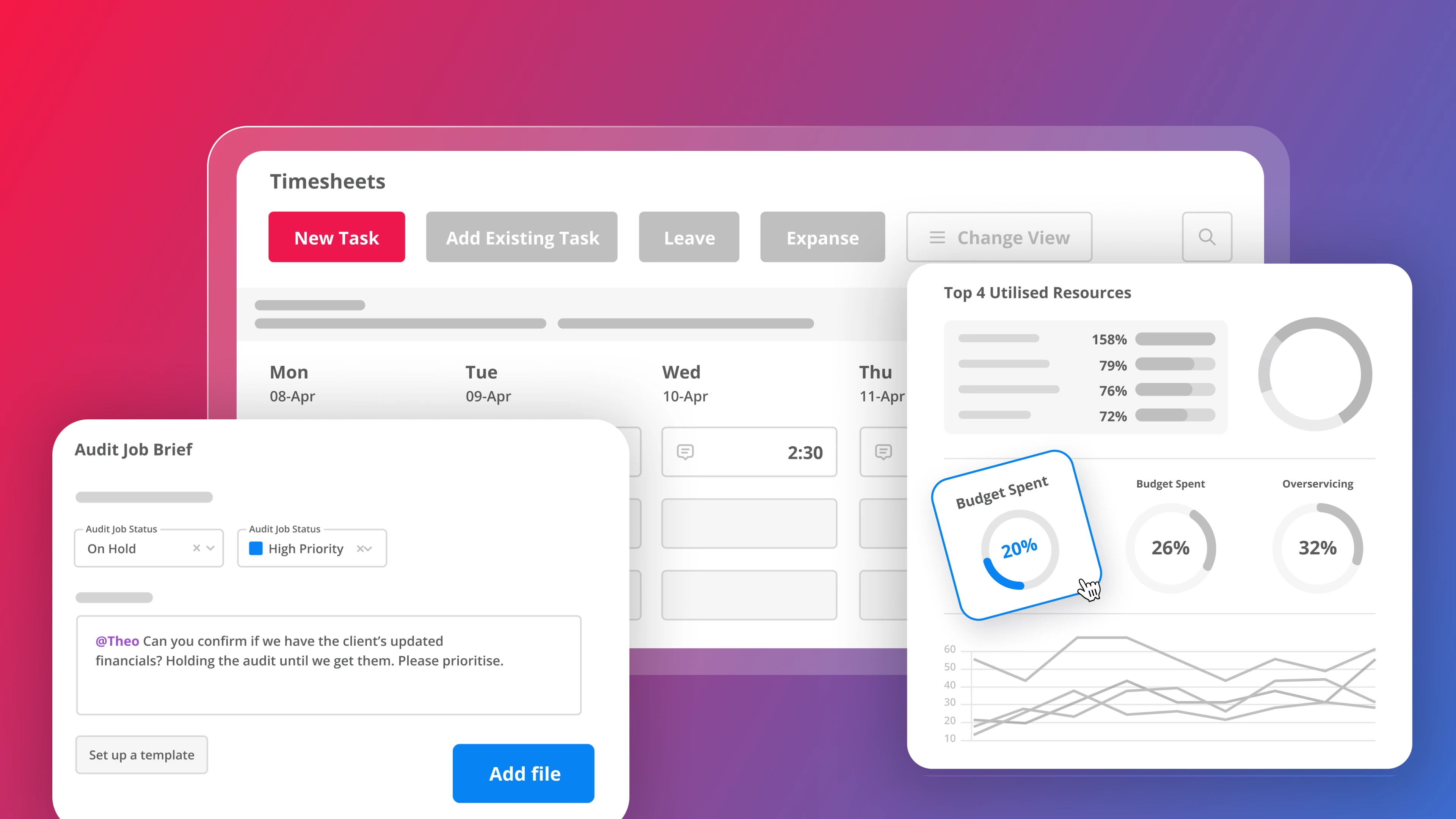Professional Services Automation: The Complete 2025 Guide

Your business deserves predictability
If you're ready to turn operational complexity into a competitive advantage, Magnetic can help you do it. Faster, cleaner and with far less friction.
Why 2025 Belongs to Connected Service Firms
Running a professional-service business today means navigating complexity on every front: Hybrid teams, shrinking margin, rising client expectations and a tech stack full of tools that don't talk to each other. What used to be manageable on spreadsheets now costs time, money and focus.
Every lost hour, missed approval and disconnected data point erodes margin. The firms winning in 2025 aren't those working the hardest, they are those working smarter powered by unified automation
This guide will show you:
- What PSA actually is (and isn't)
- The key components that make it transformative
- Real-world examples of measurable impact
- How to implement it successfully - step-by-step
- Where PSA is heading next
What is Professional Services Automation (PSA)?
Professional services automation software is built specifically for organisations that deliver projects for clients: agencies, consultancies, architects, engineers and in-house professional-services teams. It unifies project management, resource planning, time tracking, billing, forecasting and analytics into one connected platform.
Think of it as the operating sysem for service delivery: everything from sales pipeline to invoice lives inside one ecosystem, eliminating re-keying and giving leaders real time insight into performance.
A Brief History
Early-generations tools in the 2000's were finance centric ERP's that treated projects like manufacturing batches. Then came a wave of project management apps that focused on tasks but ignored profitability. Modern PSA combines both worlds -Financial discipline + operational agility and is now evolving further with AI-assisted forecasting and predictive scheduling.
Who uses PSA
- Operations Directors tired of reconcilling 12 spreadsheets just to see utilisation
- Founders and CEO's wanting a single view of profit and pipeline
- IT leads replacing legacy systems with integrated data
PSA serves firms from 20 people to 2,000+ adapting through modulatr features and automation depth.
Why it matters in 2025
Remote delivery, subscription billing and outcome-based pricing have made manual oversight impossible. PSA creates one source of truth that powers data-driven predictable growth.
Without PSA, you're managing people, with PSA, you're managing performance.
Key Components of a Modern PSA System
A complete PSA solution contains eight core modules that together create end-to-end visibility and control.
1. Project Management
Where strategy becomes execution.
How it works:
- Create project plans with budgets, milestones and dependencies
- Assign resources automatically based on skill and availability
- Monitor progress in real time with Gantt of Kanban views
- Connect project health to financial metrics instantly.
Best practices:
- Use templated workflows for repeatable project types
- Link tasks to billable codes so nothing slips through untracked
2. Resource and Capacity Planning
Your people are your margin. Resource planning ensures every hour is applied optimally.
How it works
- View company wide capacity weeks ahead
- Match demand to availability and skills
- Predict utilisation by department or role
Best Practices
- Forecast at least 6-weeks ahead to avoid last minute hiring
- Balance workloads to protect morale and profit.
- Founders and CEO's wanting a single view of profit and pipeline
4. Billing and Invoicing
Billing connects effort to revenue. PSA Eliminates the friction between delivery and finance.
How it works
- Generate invoices automatically from approved timesheets or milestones
- Handle fixed-fee, T&M and retainer models seamlessly.
- Integrate directly with accounting tools
Best Practices
- Automate invoice creation weekly to improve cash flow
- Track WIP (Work in Progress) to forecast earnings accurately.
How it works
5. Financial Management and Forecasting
A PSA platform turns delivery data into financial intelligence.
- Connected Revenue andcostdata for each project
- Calculate gross margins in real time
- Forecast cashflow and profitability across quarters
Best Practices
- Review Project P&L weekly
- Use scenario modeling to test pricing and capacity plans
6. Reporting and Analytics
Information without insight is just data.
How it works
- Dashboards aggregate utilisation, profitability and client health
- Real-time filters let managers zoom from macro to micro.
- Automated reports replace manual spreadsheets.
Best Practices
- Define a handful of core KPIs (Utilisation, realisation, margin)
- Deliver executive summaries weekly to keep leadership aligned
7. Collaboration and Workflow Automation
Automation keeps work moving without manual nudges.
How it works
- Rules trigger actions ("when task approved -> Notify finance")
- Slack or teams integrations keep updated visible
- Client portals allow real-time status sharing
Best Practices
- Start with 3-5 automation rules that solve real pain points.
- Expand gradually as teams adopt the system.
8. Integrations and Extensibility
No Platform lives in isolation
Common Integrations
- CRM: Hubspot, Salesforce, Magnetic
- Finance: Xero, Quickbooks, NetSuite
- Collaboration: Teams, Slack
- Business Intelligence: Looker, Tableau
Best Practices
- Use native integrations where possible to simplify maintenance
- Establish a single source of truth policy - decide which system owns which data.
Leadership, finance and delivery all operate from the same data model. Dashboards consolidate real-time performance: Projects at risk, top clients by margin, utilisation by regoin.
AI and Predictive Assitance (2025 Trend)
The latest generation of PSA tools uses machine learning to optimise forecasting and scheduling.
- AI recommends resource assignments based on skill fit and availability
- Predictive alerts warm when projects are likely to miss margin targets
- NPL interfaces let leaders ask questions like "Show projects over budget this quarter"
Benefits and Business Impact of PSA
A well implemented Professional Services Automation (PSA) platform transforms how a services firm operates. It creates a connected, automated infrastructure that continuously improves utilisation, visibility and financial control.
The result: A business that runs with precision, predictability and focus.
1. Improved Utilisation and Profitability
Every hour of unbilled time erodes Margin. PSA eliminates the blind spots that cause it - connecting schedules, forecasting and delivery so leaders can see where every hour is going and rebalance workloads before capacity is wasted.
When resource planning and forecasting are automated, teams are neither underused, nor overloaded. over time this consistency compounds: even a 5-10% gain in utilisation can deliver six-figure revenue improvements without additional headcount.
2. Predictable Revenue Forecasting
Traditional firms operate on lagging indicators: projects run, hours get logged, invoices go out. finance reconciles weeks late. PSA inverts that sequence by tying billing directly to project progress.
Revenue forecasts update automatically as devliery happens. Finance gains real-time visibility into recognised revenue, WIP, and projected margin, reducing cash-flow uncertainty and smoothing quarterly forecasts.
This level of predictability transforms financial planning. CFOs can forecast within 2-3% variance, rather than estimating from last months spreadsheets. When project progress and revenue recognition live in the same system, financial control becomes proactive instead of reactive.
3. Unified Visibility Across Departments
PSA brings leadership, operations, finance and delivery into a single data model. Instead of working from four different versions of the truth, every team seems the same live metrics:
- Project health and profitability
- Utilisation and capacity trends
- Pipeline impact on resourcing
- Margin by client or region
The operational impact is profound. Decision latency - the time between identifying and issue and acting on it drops from weeks to hours.
The responsiveness is what separates efficient firms from those perpetually keeping up.
4. Faster, More Accurate Billing
Manual billing is one of the most expensive and error-prone processes in service delivery. PSA Automates approvals, consolidates time entries and generates invoices from completed milestones or logged hours.
What used to take days of reconcilliation can not happen in hours. Finance teams can bill continuosuly, rather than at month end - improving both cash collection and client trust.
Automated partial billing for longer projects also helps maintain predictable revenue streams without waiting for full completion.
5. Reduced Adminstrative Overhead
Automation creates space for higher-value work. By removing manual handoffs, duplicate data entry and endless internal status updates, PSA can save an average of 4-6 hours of admin per employee per week.
That time compounds quickly: across a 100-person firm, thats the equivalent of adding 10-12 full time productive days every week - without a single hire.
Beyond efficiency, automation also improves accuracy and morale. Teams can focus on delivery, not reconciliation.
7. Scalable Infrastructure for Growth
Growth exposes the limits of manual systems faster than anything else. As teams expand and project volumes multiply, spreadsheets and isolated tools collapse under their own weight.
PSA provides the opposite: standardised workflows, centralised data, and repeatable processes that scale linearly. It allows a 30-person firm to grow into a 300-person firm without 10x administrative burden. Automation ensures that when the business scales, visibility and efficiency scale with it.
8. Employee Experience and retention
Operation clarity doesn't just service clients - it serves teams.
When PSA automates low-value admin work and balances workloads intelligently, employees gain back control of their time and focus.
Predictable scheduling, fewer manual updates and clear performance data reduce burnout and frustration. People can see how their work contributes to outcomes - a major driver of engagement and retention.
Firms that adopt PSA report lower staff turnover, stronger culture alignment and faster onboarding as processes become intuitive and consistent.
The Bigger Picture: Automation as a Competitive Advantage
Every firm today faces the same operational pressures: squeezed margins, hybrid teams, rising client expectations. The difference between those that thrive and those that struggle isn't talent or opportunity - it's operational maturity.
PSA-driven automation is what enables maturity. It replaces reaction with foresight manual effort with insight and scattered tools with unified performance.
How to Implement PSA Successfully
Rolling our PSA is an organisation-wide project. Follow these steps for a smooth, value-driven transition.
Step 1: Define Objectives and Success Metrics
Clarify why you're implementing PSA: Higher Utilisation, faster billing, better visibility. Set SMART targets (e.g. "Increase billable utilisation by 8% within 90 days).
Step 2: Map Current Workflows
Document how projects move today, from sales to delivery to invoice. Identify bottlenecks, redundant handoffs and manual reports. The process map becomes your blueprint for automation.
Step 3: Select the Right PSA Platform
When evaluating tools consider the following:
- Industry fit: Does it understand professional-services nuaunces
- Ease of use: Adoption > Features
- Integration depth: Must sync cleanly with CRM & accounting
- Reporting strength: Can executives self-serve data?
Step 4: Prepare and Clean Data
Garbage in = garbage out. Audit client, project and financial data before migration. Standardise naming, currency and rate structures.
Step 5: Pilot, Train and Iterate
Start with one team or department. Train power users first, gather feedback, refine workflows , then scale.
Best practices:
- Run wekly feedback stand-ups during pilot phase.
- Document quick wins for internal marketing.
Step 6: Drive Adoption Through Change Management
Resistance is natural. Address it directly.
- Communicate "what's in it for me" to each role
- Recognise early adopters publicly
- Keep leadership visible engaged
Step 7: Measure, Optimise and Scale
After launch, monitor KPIs monthly: Utilisation, billing time, project margin. Use PSA analytics to identify new automation opportunities.
Typical PSA Implementation Timeline
How Professional Services Automation Fits into the Broader Tech Stack
Modern PSA software is the connective tissue of the entire Service Firm Ecosystem
1. CRM Integration
When a deal closes, the PSA auto-creates a project, assigns resources and sets budgets, without any manual setup. Benefits: clean hand-offs, accurate pipeline forecasting, faster project starts..
2. Accounting Integration
Invoices, revenue recognition, and cost data flow automatically to finance. Controllers get real-time visibility into WIP and AR.
3. Collaboration Integration
Slack/Teams notifications keep communication contextual. Updates live where work happens.
4. HR & Timesheet Systems
Sync staff availability, leave and cost rates to keep forecasts accurate.
5. Business Intelligence
Feed PSA into BI tools like Power BI and Looker for advanced reporting or board-ready dashboards
The Connected Value
When every system shares data with PSA at the center , you achieve real-time operational clarity - the holy grail of services management.
The PSA Technology Landscape
Here's how todays platforms categorise
Category 1: Project Management Hybrids
Lightweight tools (Asana, Clickup, Monday.com) that have added time tracking, invoicing or resource management extensions.
.svg)

.svg)

Category 2: Mid-Market PSA Platforms
Mid-market systems such as Acello or Kantata (formerly Mavenlink) target firms with 20-200 employees
.svg)

.svg)

Category 3: Enterprise PSA
Enterprise-level systems such as FinancialForce, Kimble and OpenAir, offer deep EPR integration and advanced confirguration options.
.svg)

.svg)

Category 4: Modern Unified Platforms
The newest generation of PSA software represented by Magnetic and a small handful of of modern contenders combines project management, resource management, financials, CRM management and more into a single intelligent platform.
- All-in-one visibility: One login, one data model, full lifecycle oversight.
- Fast implementation: Most firms launch within 8-12 weeks or sooner
- Designed for humans: Modern UX built for daily use by project teams, not just ops admins
- Native integrations - connects natively to Xero, Google, Outlook, Zapier and more.

Emerging Trends for 2025 and Beyond
- AI-driven forecasting: Predict utilisations, flag over-allocation and auto-suggest resourcing
- Predictive profitability: AI Alerts flags when projects risk margin loss.
- Usage-based pricing: Firms shifting from flat licenses to outcome-based fees.
- PSA + CPQ Integration: Quoting tied directly to delivery data for Margin accuracy
By 2027, AI-Assisted Professional Services Automation will handle 40% of resource scheduling automatically (Gartner Future of Work 2025)
Real-world Impact: Professional Service Automation in Action with Magnetic
Numbers are powerful, but stories make them real. Below are condensed case studies of drawn from Magnetic clients - each showing how professional services automation creates measurable impact
From Fragmented Tools to Full Visibility
Exonic replaced multiple disconnected systems with Magnetics Unified PSA platform, gaining real-time insights and eliminating manual reconcilliation.
The result:
.svg)
.svg)
.svg)


Happy Friday: Scaling Delivery, Cutting Admin
With Magnetic's dynamic scheduling and multi-resource resource management, Happy Friday streamlined resourcing and removed duplicate effort.
The Result:
.svg)
.svg)
.svg)


Automating for Accuracy & Scale
Chapu modernised operations by operating time, expenses and resource management with Magnetic.
The result:
.svg)
.svg)
.svg)

Common Challenges and Practical Solutions
Even with the right PSA solution, implementation and adoption isn't always smooth sailing. Many furms face similar hurdles during roll-out, from data migration issues to team resistance. The good news? These challenges are predictable, measurable and solvable with the right approach.
The table below highlights the most common pain-points firms encounter, why they happen and how to overcome them.

The Future of PSA: What's next for 2025 and Beyond
1. Predictive resourcing
AI will anticipate resourcing bottlenecks weeks ahead, re-balancing work automatically to protect margins.
2. Data-driven pricing
Usage and outcome data from PSA will feed dynamic pricing models linking profitability to value-derived.
3. Unified experience across client lifecycle
Expect PSA, CRM and CPQ to merge into one platform , from first conversation to final invoice.
4. AI Assistants for operations
Conversational assistants will answer questions like "Which projects are over-budget this month?" and "who has capacity next week?" in seconds, without the need to dig through spreadsdheets or manual reconcile.
5. Deeper Benchmarking
Anonymous industry data will let firms compare KPIs against peers instantly, driving smarter decisions.
Wrapping it up: Your next step towards operational Clarity
Professional services automation has matured from a "nice-to-have" into the core competitive advantage. In 2025, firms operating without a PSA system are flying blind and burning margin every day.
The firms that win are the ones that connect sales, delivery and finance in real-time, that turn data into decisions, and free people to do their best work.
If you're ready to replace guesswork with clarity, automation and growth momentum:
Your business deserves predictability
If you're ready to turn operational complexity into a competitive advantage, Magnetic can help you do it. Faster, cleaner and with far less friction.

1000's of global teams use Magnetic to bring clarity, consistency, and speed to their internal operations.
















.svg)
.svg)

.svg)

